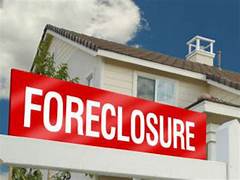In 2007, the United States witnessed further increases in foreclosures, marking a pivotal year in the subprime mortgage crisis that had been simmering since 2006. The fallout from this crisis had far-reaching consequences for the American economy, the housing market, and countless homeowners. The subprime mortgage crisis, which had its roots in the early 2000s, involved the issuance of high-risk mortgage loans to borrowers with poor credit histories or unstable financial situations. These subprime mortgages were often accompanied by adjustable interest rates, which meant that homeowners' monthly payments could significantly increase over time, leading to a heightened risk of default. The housing market had been booming, with home prices surging to unprecedented levels, making it seem like an opportune time for lenders to extend credit to borrowers who might otherwise be considered too risky. However, as 2007 progressed, it became increasingly evident that the housing bubble was bursting. Home prices began to decline, causing homeowners to owe more on their mortgages than their homes were worth. This situation, known as negative equity or being underwater, created a dire financial predicament for many homeowners. As adjustable mortgage rates increased, making monthly payments unaffordable, a wave of foreclosures swept the nation. The repercussions of this foreclosure crisis were profound. It reverberated through the broader financial markets, triggering a liquidity crisis and sending shockwaves through the global economy. As foreclosed properties flooded the market, the oversupply of housing further depressed home prices, setting off a vicious cycle of declining property values and even more foreclosures. The lending institutions that had heavily invested in subprime mortgages, along with various financial products derived from these loans, found themselves on the brink of collapse. Several prominent financial institutions, including Lehman Brothers, Bear Stearns, and AIG, faced severe financial distress, requiring massive bailouts to avert a complete financial meltdown. To address the foreclosure crisis and stabilize the economy, the U.S. government implemented a series of measures. The Federal Reserve initiated several interest rate cuts in an attempt to ease the credit market, making borrowing cheaper. Additionally, the Troubled Asset Relief Program (TARP) was established in late 2008, authorizing the government to purchase distressed assets from financial institutions and stabilize the financial system. The Making Home Affordable program aimed to assist homeowners facing foreclosure by providing refinancing options and mortgage modification opportunities. These efforts were designed to stem the tide of foreclosures, but the road to recovery was long and arduous. Many homeowners who had lost their homes found it challenging to rebuild their lives, while neighborhoods blighted by foreclosures suffered from decreased property values and increased crime rates. The subprime mortgage crisis left an indelible mark on the American economy and served as a cautionary tale about the perils of reckless lending practices and the consequences of a housing bubble.
2007 U.S.A. – – Further Increases in Foreclosures
